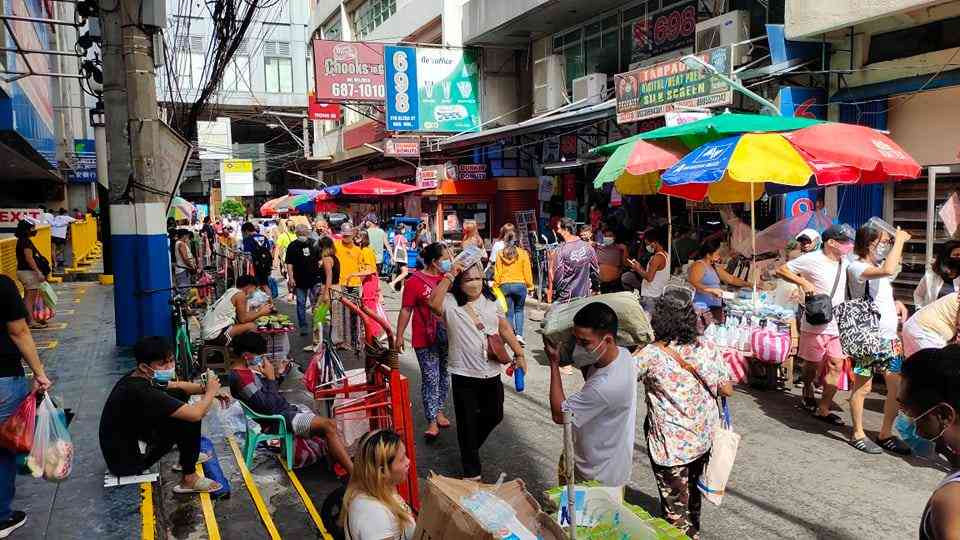

Around 14 million Filipinos or 51% of families still considered themselves "poor," based on the recent survey conducted by the Social Weather Stations (SWS).
The SWS survey, conducted from March 26-29 but released on May 7, Sunday, showed that 51 percent of Filipino families were labeling themselves as poor.
It was followed by the 30 percent who rated themselves as “borderline” while 19 percent categorized themselves as not poor.
According to SWS, the results of the March survey are similar to the results of its December 2022 survey which found 51 percent of Filipino families self-rated as poor, 31 percent said they were borderline, and 19 percent considered themselves not poor.
“The estimated numbers of Self-Rated Poor families are 14 million in March 2023 and 12.9 million in December 2022. To arrive at the estimated numbers of Self-Rated Poor families, the percentage of respondent households rating themselves as poor was applied to the Philippine Statistics Authority medium-population projections for 2023 and 2022, respectively,” the poll body stated.
The pollster also noted that the national estimates were weighted by the Philippine Statistics Authority's (PSA) medium-population projections for 2023.
SWS surveyed 1,200 respondents – 300 each in Metro Manila, Balance Luzon, Visayas, and Mindanao. The error margins for the survey are ±2.8% for national percentages and ±5.7% each for Metro Manila, Balance Luzon, Visayas, and Mindanao.
Borderline, not poor
More families rated themselves as not poor in Balance Luzon, which increased from 20 percent to 25 percent. It was the opposite in Metro Manila, which declined from 39 percent to 33 percent, and in Mindanao from 11 percent to 6 percent.
Data in the Visayas remained at 9 percent.
Meanwhile, the percentage of Filipino families who rate themselves on the borderline did not statistically change in three regions, going from 29 percent to 26 percent in Metro Manila; 30 percent to 32 percent in Balance Luzon; and 30 percent to 33 percent in Mindanao.
In the Visayas, the percentage fell to 26 percent from 34 percent.
The number of Filipino families who considered themselves poor rose in Metro Manila from 32 percent to 40 percent, and in Visayas from 58 percent to 65 percent, the pollster noted.
“However, it fell in Balance Luzon from 49 percent to 43 percent, while it was statistically steady in Mindanao, moving from 59 percent to 62 percent,” it said.
SRP threshold, SRP gap
The SWS also reported that in the last five quarters, the national median Self-Rated Poverty Threshold (SRP Threshold) stayed at PHP 15,000, while the national median Self-Rated Poverty Gap (SRP Gap) rose from PHP 5,000 in December 2022 to PHP 6,000 in March 2023.
“The SRP Threshold, or the minimum monthly budget self-rated poor families say they need for home expenses in order not to consider themselves poor, has remained sluggish for several years despite considerable inflation. This indicates that poor families have been lowering their living standards, i.e., belt-tightening,” the pollster explained.
“In the past, the median SRP Gap has generally been half of the median SRP Threshold. This means that average poor families lack about half of what they need to not consider themselves poor. An increase in the proportion of the median SRP Gap relative to the median SRP Threshold means a worsening in families’ budget for home expenses,” it added.
The median SRP Threshold also saw an increase in NCR from PHP 15,000 in December 2022 to PHP 20,000 in March 2023 while the median SRP Gap rose from PHP 6,000 to PHP 10,000.
For Balance Luzon, the median SRP Threshold remained at PHP 15,000 while the median SRP Gap rose from PHP 5,000 to PHP 6,000.
In Visayas, the median SRP Threshold also stayed at PHP 15,000 as well as the median SRP Gap that stayed at PHP 7,000.
Mindanao also retained its levels, with the median SRP Threshold remaining at PHP 10,000 while the median SRP Gap stayed at PHP 5,000




